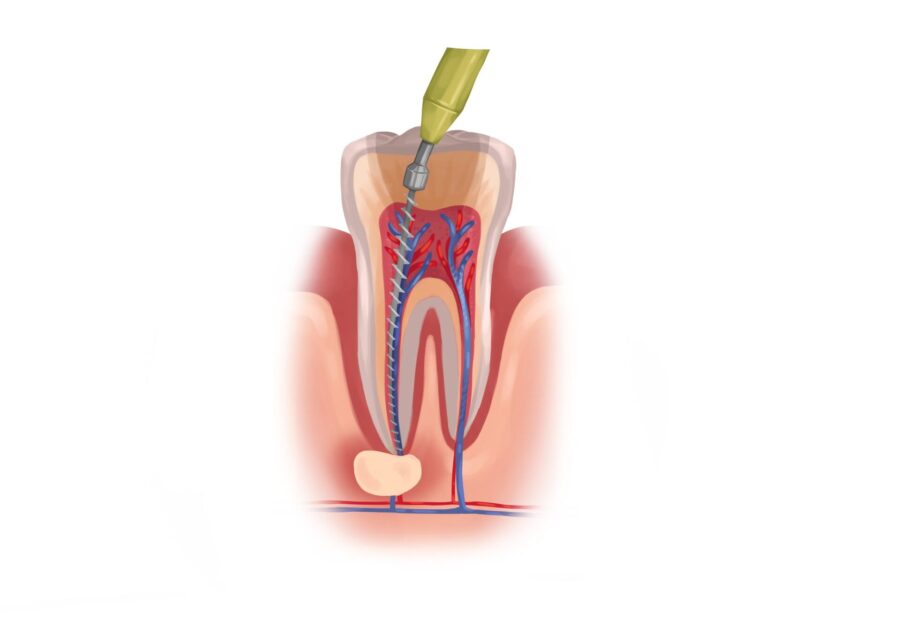
When is a Root Canal Necessary?
September 18, 2024 10:05 pmNobody likes the idea of a root canal, but the truth is, this procedure can save your tooth and relieve severe pain. Knowing when it’s time to get a root canal can make all the difference in avoiding more serious complications. So, how do you know if you need one? Let’s break down the signs, causes, and reasons why a root canal therapy might be your best option.
1. Persistent Tooth Pain
One of the most common signs that you might need a root canal is ongoing tooth pain. If the pain is constant, throbbing, or worsens when you chew or apply pressure, it could indicate damage or infection deep within the tooth. The discomfort is typically a result of inflamed or infected pulp inside the tooth. In this case, a root canal can remove the infection, stop the pain, and save the tooth.
2. Sensitivity to Hot and Cold
Experiencing a sharp or lingering sensitivity to hot or cold temperatures? This can be another warning sign. If you take a sip of hot coffee or a cold drink and your tooth reacts with a sudden jolt of pain that doesn’t fade quickly, it could be due to nerve damage inside the tooth. Sensitivity that lasts longer than a few seconds is a red flag that something deeper is going on, and root canal therapy might be necessary to fix it.
3. Darkening or Discoloration of the Tooth
When a tooth becomes discolored or turns dark, it’s not just a cosmetic issue—it could mean that the nerve inside the tooth is dying. Trauma, decay, or infection can cause this discoloration. A root canal can treat the problem by removing the damaged tissue and restoring the tooth’s appearance with a crown or other restoration.
4. Swollen or Tender Gums
If the gums around a tooth are swollen, tender, or have a small bump (often called a gum boil), it could indicate that there’s an infection in the root of the tooth. This swelling is your body’s way of reacting to the infection. In some cases, you may even notice pus or a bad taste in your mouth due to the abscess. When infection reaches this stage, a root canal is often the only way to clean out the infected tissue and save the tooth.
5. Cracked or Chipped Tooth
A crack or chip in your tooth isn’t just a cosmetic issue—it can also allow bacteria to enter the inner layers of the tooth, leading to infection. Even if the crack seems minor, it can reach the pulp and cause pain or sensitivity. If the damage is severe enough, a root canal may be necessary to remove the infected or inflamed tissue and prevent further complications.
6. Deep Decay
Cavities left untreated can grow deep enough to reach the tooth’s pulp, causing infection and extreme pain. Once decay reaches this point, a simple filling won’t cut it. A root canal is needed to remove the decayed pulp and prevent the infection from spreading. Without treatment, the infection could lead to tooth loss or even spread to other parts of your body.
7. What is Root Canal Retreatment?
Sometimes, even after a successful root canal, problems can return. Infection might persist or develop months or even years after the initial treatment. This is where root canal retreatment comes in. Retreatment involves reopening the tooth to remove any remaining infection, cleaning it out again, and resealing it to give it another chance at healing. Retreatment is less common, but it can help save a tooth that might otherwise need extraction. If you’ve had a root canal but are experiencing new symptoms, it’s important to see an endodontist for a thorough evaluation.
Why a Root Canal is the Best Option
When the pulp inside your tooth becomes infected or damaged, you have two main options: a root canal or extraction. A root canal is often the preferred choice because it allows you to keep your natural tooth. During the procedure, the infected tissue is removed, the tooth is cleaned, and it’s sealed to prevent further issues. Afterward, a crown is placed on the tooth for protection and strength.
The alternative—extraction—removes the tooth entirely, which can lead to other dental problems down the road. Missing teeth can cause shifting of surrounding teeth, difficulty chewing, and changes in your bite. A root canal saves you from these complications and preserves your smile.
Root Canal Treatment at Root of Endodontics in Arvada, CO
If you’re dealing with any of the symptoms mentioned above, it might be time to consider root canal therapy. At Root of Endodontics in Arvada, CO, Dr. Emmanuel Paguio specializes in diagnosing and treating tooth pain through expert endodontic care. Call the office today to schedule an appointment and protect your smile before the problem gets worse.
Contact UsImage from Authority Dental under CC 2.0
Categorised in: Root Canal FAQ
